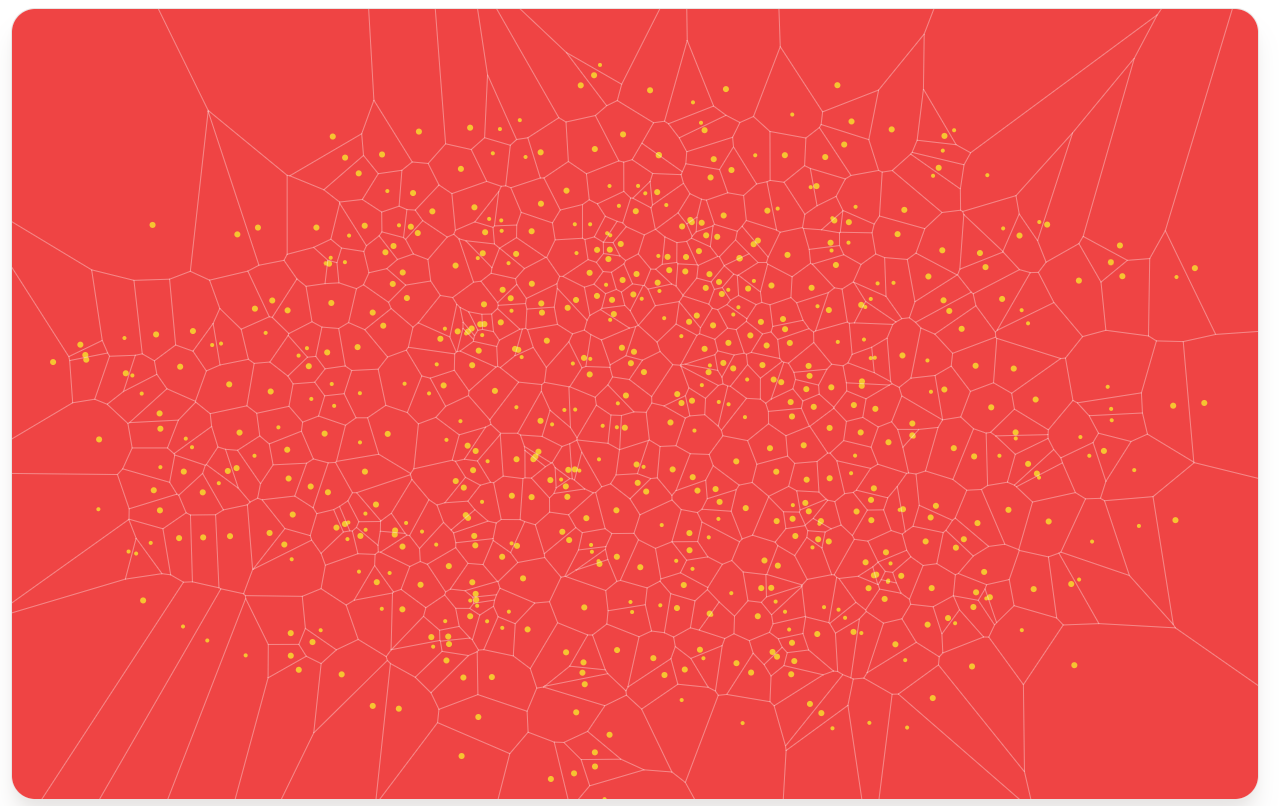Data Fabric
Data Fabric
A Data Fabric creates a structured, interconnected representation of your data using Attention-Based Graph Embeddings. This fabric enhances retrieval capabilities and supports advanced graph traversal techniques for deeper insights.
 A Voronoi point map representing a 2D plot of contextually aware vectors as interconnected points in the data fabric.
A Voronoi point map representing a 2D plot of contextually aware vectors as interconnected points in the data fabric.
Key Features:
- Integrated Context: Combines multiple data points and their attributes, capturing the full context of the information.
- Structured Representation: Forms a network of interconnected data points, enabling advanced search and analysis techniques.
- Enhanced Retrieval: Supports natural language search queries that consider the context and connections embedded in the data, going beyond mere keyword matching.
Creating a Data Fabric
Various methodologies exist to create a data fabric, each tailored to different types of data and analytical needs:
1. Attention Graph Network
Attention Graph Network leverages attention matrices from transformer models. This method focuses on the relationships identified by attention weights between different entities or concepts within a data sequence.
-
Attention Mechanisms: Attention matrices reveal the strength and relevance of connections between data points.
-
Fabric Construction: These attention-weighted relationships are mapped into a data fabric, where nodes represent entities/concepts and edges signify the strength of their connections.
-
Use Case: Ideal for scenarios where semantic understanding of textual data is crucial, such as natural language processing tasks, semantic search queries, or any textual data analysis.
2. Temporal Graph Network
Temporal Graph Networks use a module-based framework to convert time-series data—whether textual or numerical—into Attention-Based Graph Embeddings. This approach, combined with unsupervised algorithms, automatically detects anomalies.
-
Contextual Embeddings of Time-Series Data: Transforms time-series data into embeddings that capture temporal patterns and trends within the data.
-
Anomaly Detection and Forecasting: Utilizes unsupervised algorithms as part of a comprehensive anomaly detection pipeline to identify anomalies.
-
Use Case: This approach is particularly useful in fields like finance or IoT, where understanding temporal trends or detecting anomalies in time-series data is critical.
3. Code Fabric
Code Fabric is designed to enhance the efficiency of code management and discovery within enterprises. Every piece of code—classes, objects, or methods—is represented as a graph, where the relationships between these components form the fabric.
-
Fabric Representation of Code: Code is treated as a network of interconnected components (e.g., classes, methods, variables). The system identifies and maps these relationships, allowing for easy discovery and reuse of similar code snippets.
-
Efficiency in Code Reuse: By connecting related pieces of code, this fabric helps developers quickly identify reusable components, improving development efficiency.
-
Use Case: articularly useful in large codebases where finding and reusing existing code components can save time and resources, especially in collaborative environments.
Conclusion
A Data Fabric represents a data transformation approach to organizing and analyzing complex datasets by creating an interconnected network of data points.